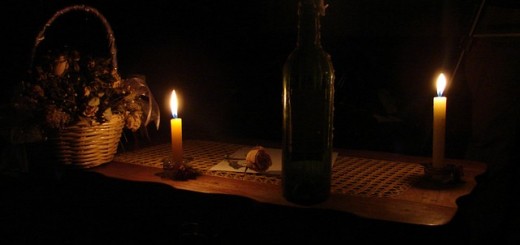Of Tu BiShevat And Esrogim

In many circles, it is common to daven on Tu BiShevat for a beautiful esrog to use during the coming Sukkos. There is even a special tefillah composed just for this purpose.
The New Year for trees first appears in the Mishnah in the context of agricultural Mitzvos that are observed in Eretz Yisroel. One needs to know the dividing line between one growing season and the next, so ensure that the correct tithes are taken in any particular year. The New Year for trees is this dividing line. The Mishnah tells us:
The first of Shevat is the New Year for the tree, according to Beis Sham’ai. Beis Hillel say that it is on the fifteenth of Shevat. (Mishnah Rosh HaShanah 1:1)
Although much of the winter is still to come, since the majority of the rain has already fallen by this time (Rosh HaShanah 14b), the fifteenth of Shevat (the halachah is decided accorded to Beis Hillel) is chosen as the New Year for trees. At this time, at least in Israel, the sap begins to rise in the trees and the first formation of the buds commences (Rashi to Rosh HaShanah 14b).
Beney Yissochor notes an anomaly in our Mishnah. He remarks that the singular ‘tree’ is used, when we might have expected the plural ‘trees’. This is in contrast to the other subjects of the Mishnah, all of which are mentioned in the plural. He assumes that the singular usage is an oblique reference to the pre-eminent tree in Jewish life – the esrog. Indeed, he observes (and concludes with what well be one of the only jokes in the Beney Yissochor):
This is the day on which the sap rises in the trees, in accordance with the merit of each individual Jew. Behold how good and pleasant it is for a man to pray on that day (which is the first moment of sprouting) that God should provide him with the fruit of the beautiful tree at the time when he needs it. May his prayer bear fruit! (Chodesh Shevat, Ma’amar Rosh HaShanah LaIlonos 2)
The Torah never names the fruit to be used with the lulav-bundle as the esrog; it is left to the Oral Tradition to establish its identity. The soubriquet that the Torah uses instead – ‘fruit of a beautiful tree’ (VaYikra 23:40) – incorporates many layers of meaning. Before giving an example of this, it is noteworthy that Chazal offer four views of the identity of the fruit from which Adam ate in the Garden of Eden. (Pesikta Rabbosi 42:2) According to Rebbi Aba from Akko, it was an esrog.
As mentioned, the description ‘fruit of a beautiful tree’ suggests many meanings. Chazal note that the phrasing of the verse indicates that both the tree and its fruit are beautiful (Yerushalmi Sukkah 3:5). This extends to the taste of the esrog and the bark of the tree itself, which are apparently to be similar to one another. This strange characteristic evokes an enigmatic part of the Genesis story. On the third day of Creation, God called ‘fruit trees, producing fruit’ into existence (BeReishis 1:1). However, ‘trees, producing fruit’ came into being (ibid. 11). The Midrash explains this discrepancy by noting that God’s intention was that both the fruit and bark of the trees should be edible; however, the trees defied the Divine will, and produced edible fruit, but inedible bark (BeReishis Rabbah 3:10). Rashi adds that even the taste of the bark was intended to be like that of the fruit (Rashi to BeReishis 1:11).
As trees have no free-will, what why does the Midrash ascribe a rebellious nature to them? It has been suggested (heard in the name of Rabbi Moshe Shapiro) that every Midrash of this kind informs us of some aspect of the disparity between ideal existence and reality. In the ideal world, ‘fruit’ and ‘bark’ taste alike: ‘fruit’ is the end and ‘bark’ the means. In the perfect world, spirituality suffuses physicality, and the means and ends of human endeavour are connected: what we do and the results we experience are truly synonymous. However, we live in a world in which the imperfection and lack of spiritual clarify means that very often, we cannot see the relationship between our actions and their outcomes; indeed, the preservation of free-will demands that there is no obvious link between them. In the real world, then, the ‘fruit’ does not taste like the ‘bark.’ The Midrash teaches that there is a major distinction between reality and perfection, one that we are capable of narrowing through our own efforts.
It is remarkable that the esrog, a tree whose bark and fruit taste alike, is the only remaining vestige of the idyllic pre-sin world of the Garden of Eden. It represents a glimmer of hope that one day we will be able to perfect the world and recreate this ideal.
The Zohar HaKodosh states that when one performs a Mitzvah in the physical world, this has an impact on the spiritual world. Apparently, the Sukkos Mitzvah of arba minim occupies a special place in this process:
How exalted are the works of the holy king, for the acts that one performs in the terrestrial world are joined with a holy connection to the celestial world. When one takes something in the terrestrial world and does an act with it, this activates the same action in the celestial world that is connected to it…. There are those acts that unify the holy name, for example, the lulav, esrog, hadas and arovah, for all of these unify the holy supernal name. Thus it is taught that one must unite them and perform the act with them together. (Zohar HaKodosh 1:220b)
The idea that each of the species represents God himself is actually taught by the Midrash:
The fruit of a beautiful tree – this is God, about whom it is written: You are clothed with glory and majesty. Palm branches – this is God, about whom it is written: the righteous shall flower like the palm. Boughs of thick-leaved trees – this is God, about whom it is written: and He is standing among the myrtles. Willows of the brook – this is God, about whom it is written: extol Him – the one who rides on clouds (aravos = willows) – God is His name. (VaYikra Rabbah 30:9, based on VaYikra 23:40)
This concept is reflected by the halachah, which demands that the esrog is held together with the lulav-bundle when performing the Mitzvah (Shulchan Oruch, Orech Chaim 651:11). The spiritual impact of this is mentioned in the Kabbalistic meditation said by many before beginning the Mitzvah:
May it be Your will, Lord my God and God of my ancestors, that with the fruit of a majestic tree, palm branches, boughs of thick-leaved trees and willows of the brook, may the letters of Your unique name be joined one to the other, such that they are one in my hand, and to know how Your name is called upon me… (Sukkos Machzor)
The mystic Rekanti recorded a fascinating dream, in which he reveals the significance of holding the esrog together with the other minim:
One must put the esrog adjacent to the other species, so as not to disconnect it from the structure. This secret was revealed to me in a dream on the first night of the Yom Tov of Sukkos, when I had a guest staying with me, a pious Ashkenazi by the name of Reb Yitzchok. I saw in my dream that he was writing the Divine name and he distanced the last heh from the first three letters. I said to him, ‘why did you do this?’ And he responded, ‘such is the custom in our place.’ I erased it and wrote it properly. I was perplexed by this vision and did not understand it. The next day, at the time for taking the lulav, I saw that he waved only the lulav with its bundled species, without the esrog. I understood the meaning of my dream and I corrected him. The Rabbis allude to this idea in VaYikra Rabbah…. that each of these species hint to the name of God. (Rekanti, quoted in Beis Yosef, Orech Chaim 651)
The esrog signifies the final heh in the Divine name – which in turn represents the complete revelation of God in all His magnificence throughout all physicality. God is continuously evident in the higher worlds, as suggested by the first three letters of His name (and indeed by the three species that are bound together), but it is often very difficult to perceive Him in the lower, apparently flawed, world. When we place the esrog together with the other minim, we acknowledge, and perhaps savour for a moment, the notion that it is possible for God to be manifest in all of creation. As we have seen, the esrog is the ideal instrument for this, as its unique properties are reminiscent of the perfect world of the Garden of Eden.
When one prays for a beautiful esrog, one asks not just for a perfect specimen of the fruit, but also for an opportunity to realise the concept that we have discovered it to represent. Why is this associated with Tu B’Shevat?
In discussing the advent of the Messianic era, the Talmud observes that human history is divided into three stages – 2000 years of chaos (before Avrohom), 2000 years of Torah and 2000 years of the Messianic epoch (Sanhedrin 97a). The Sochaczewer uses this idea to identify three distinct phases of the Jewish year (Shem MiShmuel, BeShallach 5673). The first third of the year is essentially dormant: its primary focus is consolidating the spiritual progress of the previous year, rather than on religious growth. The active phase commences at the start of the second third. As Yom Kippur is our opportunity to expunge the sins of the past, Sukkos, which starts just four days later, represents the start of a new cycle of opportunity:
You shall take for yourselves on the first day – the first for calculating sins. (Midrash Tanchuma, Emor 22, based on VaYikra 23:40)
With respect to the opportunity for spiritual growth, the year begins and ends at Sukkos. It marks the opening of a new personal account with God, as well as the chance to bring about a glimpse of the ultimate experience of Divine manifestation. As we have seen, this is represented by the union of the esrog with the other minim. When calculated like this, Tu BiShevat is one third of the way through the year. While the sap is rising in the trees, the first twinkle of spiritual awareness is stirring within us, ready to burst into bloom for a year of active and valuable Jewish growth. We hope that it will be a year in which we can maximise our potential, and thereby increase the level of holiness in the world. On Tu BiShevat we pray that we will merit a beautiful esrog this year and bring those lofty goals to complete fruition by the coming Sukkos.
An earlier version of this article appeared in HaModia several years ago




Recent Comments